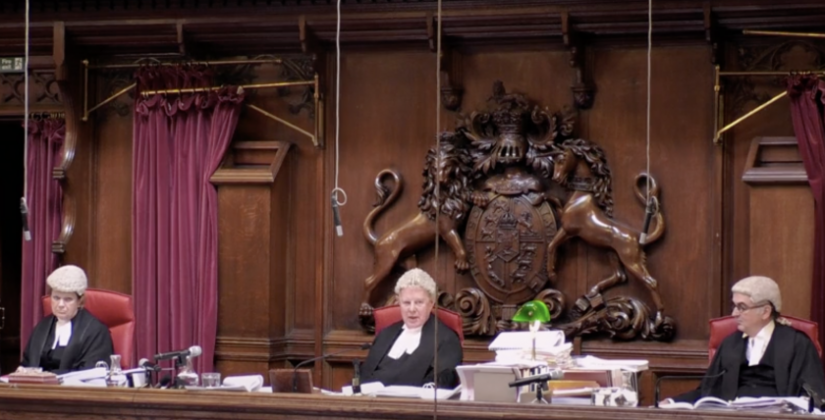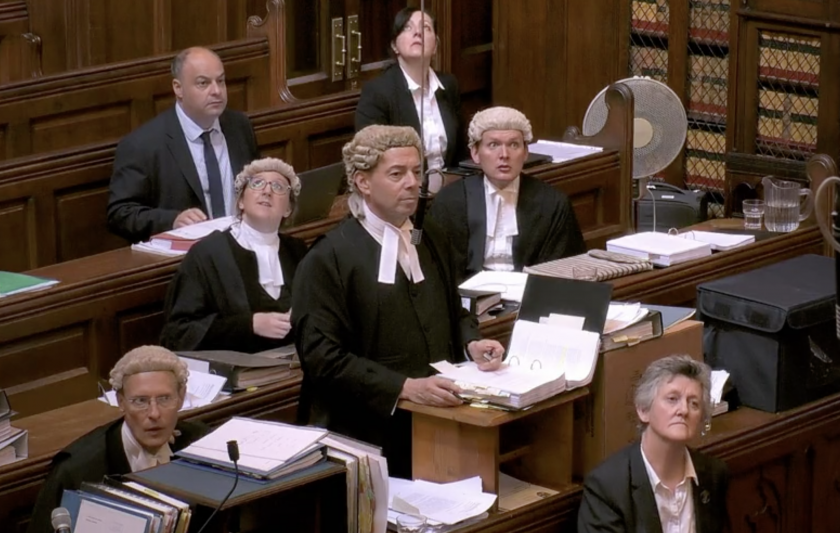TV review: Inside the Court of Appeal (ITV)
ITV was given unprecedented access to the workings of the Court of Appeal (Criminal Division) but the resulting documentary was long on sentiment and rather short on legal explanation, reports Paul Magrath

Filmed on location in the Lord Chief Justice’s court and elsewhere at the Royal Courts of Justice, ITV’s documentary, Inside the Court of Appeal, offered viewers the first real opportunity to see how criminal appeals in England and Wales are presented and decided. While some criminal cases involve points of law of sufficient importance to warrant an appeal to the UK Supreme Court, for the vast majority of cases the Court of Appeal (Criminal Division) is the end of the road.
The programme, broadcast on 23 August, focused on three such cases. One of them involved a 14-year-old boy who had been convicted, on the basis of joint enterprise, for his part in a killing carried out by teenage gang in Liverpool. He had been just 12 at the time, but was tried with the other members of the gang in an adult court because they were charged with an offence of homicide.
Another involved a man convicted of causing death by dangerous driving, who had already served his two-year prison sentence, but wished to clear his name by establishing, on new evidence, that he had lost control of his vehicle by reason of an epileptic fit that had come on before, not during or after, the fatal collision.
The third case was an appeal (or a referral by the Attorney General) on the ground that the 12-year prison sentence given to a joy rider whose car had mounted the pavement and killed two people had been unduly lenient.
In the film, we met the victims and their families and some of the barristers and solicitors involved. We watched the lawyers talking to the clients and putting on their wigs and gowns, and we saw them addressing the court. There was a certain amount of explanation of what was going on, but probably not enough. As the voiceover said at the beginning, “This film follows the human stories behind the courtroom drama.” It seemed rather less interested in explaining the legal issues the cases raised.
There was, it is true, a basic outline of the doctrine of joint enterprise, which was the subject of a well publicised campaign around the time of the Supreme Court’s hearing and decision in R v Jogee [2016] UKSC 8; [2017] AC 387. The argument in the teenage gang member’s appeal was that, having run away before the fatal stabbing of the victim by another gang member, he had not had the requisite intention under the revised rule laid down in Jogee’s case. There was also some basic explanation of the defence of automatism, ie lack of control negativing intention, in the case of the fatal accident driver.
But for the most part it was all about the human element, often resorting to that pedestrian and slightly patronising tone of reality TV. Early on someone asked one of the participants:
“So it’s your first time being in the Royal Courts of Justice?”
“Yes”
“Do you find it scary?”
“Petrifying.”
The main hearing took place in Court 4 (the Lord Chief Justice’s court, with Lord Thomas of Cwmgiedd CJ, as he then was, presiding) while other cases were heard down the corridor in one of the other courts. (The other courts don’t have that massive carved wooden royal coat of arms behind the bench. The voiceover dished out little soundbites of fact:
“For 140 years”, we were solemnly informed, “all kinds of criminal case have passed through the hallowed courtrooms of the Court of Appeal”.
“Criminals that feel they’ve been wrongly convicted can come to the Court of Appeal, which has the power to overturn their convictions.”
“Appeals eligible for legal aid costs the taxpayer nearly £3m a year… But the judgments of this court have rewritten the course of legal history.”
Then, having watched the stories unfold, we saw the court giving judgment. This was where, I think, a trick was missed. You saw the disappointment of the losers, but most lay viewers would not have been able to understand the reasons why their appeals had been refused. This can look like an unimaginably perfunctory process, when it’s just handed down, though not for the reasons given by the voiceover:
“After months of waiting and years of fighting on both sides, the verdict is delivered in a matter of seconds.”
Moreover, there was little sense of why the judges had decided the way they did, even when they didn’t hand it down in writing. Not surprisingly, this lack of understanding was manifested in the reactions of the victim’s families. A victim’s mother said:
“Twelve years. That’s the value they put on two people’s lives… We’ve got to serve our sentence now. That’s never going to go away.”
Another family member said:
“You go through life thinking we’ve got the best justice system in the world and you remain that way until you actually get involved with it.”
One longed for some explanation of sentencing policy, of the discount given for early pleas, of the fact that it’s not just about an eye for an eye, and so on. If someone eventually explained this to the victim’s family, it certainly didn’t emerge for the benefit of viewers of the programme. This is a real failure of public legal education, when the opportunity was right there to put things right.
Aside from understanding their judgments, it might have been nice to hear the judges speak about their role and watch them put on their robes and wigs. But there was no access to the judiciary. We saw them come in and sit down, comment on the air conditioning (or lack of it) and, momentarily, we saw them delivering judgment. But otherwise they ignored the cameras and remained, essentially, remote.
Someone we only caught a very brief glimpse of was the ICLR law reporter, who is also editor of the Criminal Appeal Reports. But she was there, as this freeze-frame records, sitting in the well of the “hallowed court”, waiting to see if the case might “rewrite the course of legal history”. (It didn’t.)
